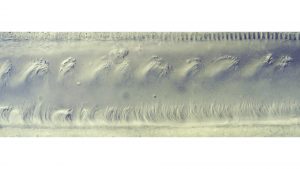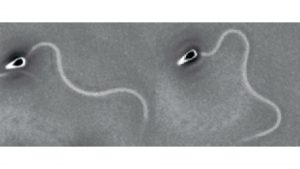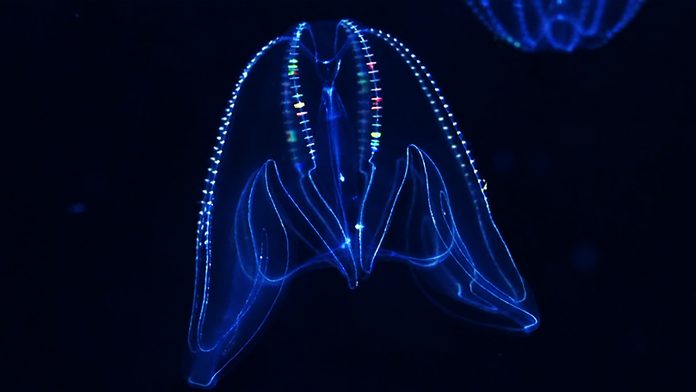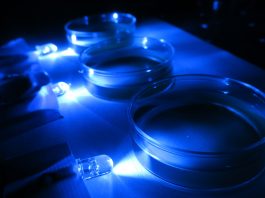Professor Kazuo Inaba, from Shimoda Marine Research Center at the University of Tsukuba, highlights the role of cilia in the human body and oceans.
Recently, we have come to hear the word ‘cilia’ more often than ever. It is the plural of ‘cilium’, a tiny hair-like structure extending from a cell. Cilia in a respiratory organ such as the trachea are called ‘air-way cilia’, which beat and produce the flow of the mucus layer to exclude pathogens, including bacteria and viruses. They play a crucial, defensive role in our body. One of the clear-cut reasons for the aggressive COVID-19 symptoms, which brought about a global pandemic from 2020, is that this virus runs through this defence by damaging ciliated epithelium.
Motile cilia are found in other parts of our body, too. For example, the tail of sperm is called ‘flagellum’, which is another term for a long monocilium (a single cilium per a cell). Cilia in the brain ventricle produce the flow of cerebrospinal fluid; those in the oviduct carry gametes and embryos. The leftward fluid flow by tiny cilia on an area of early embryo, called node, determines left-right laterality of organs such as the heart and liver. Defects of ciliary structures or movements cause wide-ranging disorders, including bronchitis, male infertility, hydrocephalus and situs inversus.
Structure based on ancient life forms
The architecture of cilia is a sort of natural art. Over 400 proteins make up the central motile apparatus of cilia called the axonemes. Microtubules and the molecular motor ‘dyneins’ are arranged to construct a 9+2 cytoskeletal framework with nine-fold radial symmetry, so as to generate ciliary bending and propagation. These beautiful structures are thought to originate from an ancient unicellular eukaryote more than two billion years ago and have been taken over by most eukaryotic life forms, except decapods and angiosperm, both of which are rare organisms that have lost cilia. Bacteria also use flagella for motility, but their structures are fundamentally different from that of eukaryotes.

The origin of cilia is controversial. Several theories associate the origin of cilia with virus infection, symbiosis of spirochete-like bacteria, and specialisation of a cytoskeleton-based transport system, but how eukaryotic cells acquired cilia remains enigmatic. Cilia are thought to contribute to the evolution of Earth’s life forms. Eukaryotic supergroups, bikonts and unikonts, which are defined by the number of cilia per cell, are generally supported, although another theory is proposed for the early branching of eukaryotes. In addition, some researchers maintain the idea that cilia were a driving force for animal formation during the invertebrate evolution.

Not just a simple motile machinery but also a sensor
Cilia can modulate the motility in response to chemical substances, mechanical forces, and possibly light. The stimuli are converted into intracellular signalling mediated by calcium ion and cyclic nucleotidess, which cause the changes in dynein activity. At fertilisation, sperm are activated and change their moving direction (chemotaxis) by egg-released chemical compounds known as ‘chemoattractants’. Unicellular green algae show phototaxis depending on light intensity. Fish sperm are activated for fertilisation by responding to the sudden change of osmolality from inside the body to the outside environment, i.e., fresh water or sea water.
During evolution, cilia became diversified and some cilia have lost the ability to beat, specialising instead in the sensing of the environment. These cilia are sensory cilia or primary cilia, which are abundant in almost all organs in the human body. For example, primary cilia on the kidney tubule in the nephron sense the mechanical force from the flow of primitive urine, triggering the increase in intracellular calcium concentration through the ciliary membrane. This change is necessary for proper cell division and alignment to make up the tubular structure of the kidney tubule. A defect in the formation of renal primary cilia causes polycystic kidney diseases.
Cilia in the ocean
Why have these tiny hairs been a part of the human body for the last two billion years? All lifeforms on this planet originated from the ocean and are highly dependent on water. Even the bodies of land animals, like humans, are filled with water. Cilia are specialised to achieve high energy efficiency in terms of movement in micro-aquatic environments, often called the ‘low Reynolds number environment’, where inertia is negligible and viscous resistance exerts thrust. In epithelia, semi-synchronised (metachronal) ciliary waves generate an efficient fluid flow with high energy efficiency.
Both eels and sperm swim in water by the propagation of undulating waves, but how they interact with water is completely different. Eels, like other swimming animals, use muscles (based on actin filament and myosin motor) to generate propulsive force for undulating movement. Microtubule-based cilia, however, are limited in a micro-aquatic, low Reynolds water world, with the exception of ctenophore comb plates.
Cilia are seen everywhere in the ocean; those in ciliated plankton, coral epithelia, invertebrate larvae, and benthic animals such as flatworm and bivalves, are indispensable for locomotion and feeding. Fish swim in groups with individuals evenly spaced. This behaviour is called fish schooling, in which fish sense water flow by sensory immotile cilia in the cupula of lateral lines, like the case of cilia in a kidney nephron. The significance of cilia is not limited to the individual organisms but spreads to the ecological level, too. Larvae of marine invertebrates, as well as gametes or zoospores of algae, are shed in open water and directionally swim by cilia or flagella in response to several environmental cues. Ciliary motility would thus directly or indirectly dominate the vertical migration of zooplankton, the food web, and the zonation at rocky shores.
Cilia’s eyes see the world
The Earth itself brings two massive water flows into the ocean, known as ocean circulation. One is wind-driven surface current, and the other is density-driven deep-sea circulation. All ocean areas are interconnected around the Earth, representing ‘one ocean’. Both circulations drive winds, tides, temperature, weather, climate, and element circulation. Locomotion by motile cilia in the low-Reynold world does not contribute to their mobility against massive ocean circulation, but it does affect marine life all around the globe through ecological connections. Thus, the local activity of marine organisms affects global ocean status through ocean connectivity. Human activity is also interconnected around the world. Local human behaviour often has a significant impact on the global society.
We are indebted to the ocean’s ‘ecological service’, the destruction of which would have a devastating impact on us. Vice versa, it is an axiomatic truth that bad decisions made over the last few hundred years by Homo sapiens could see all the two billion year old species, from tiny to large, vanish from the Earth, quite simply because our life is based on the life history of the many tiny housemates with whom we share this planet.
Please note, this article will also appear in the sixth edition of our quarterly publication.









